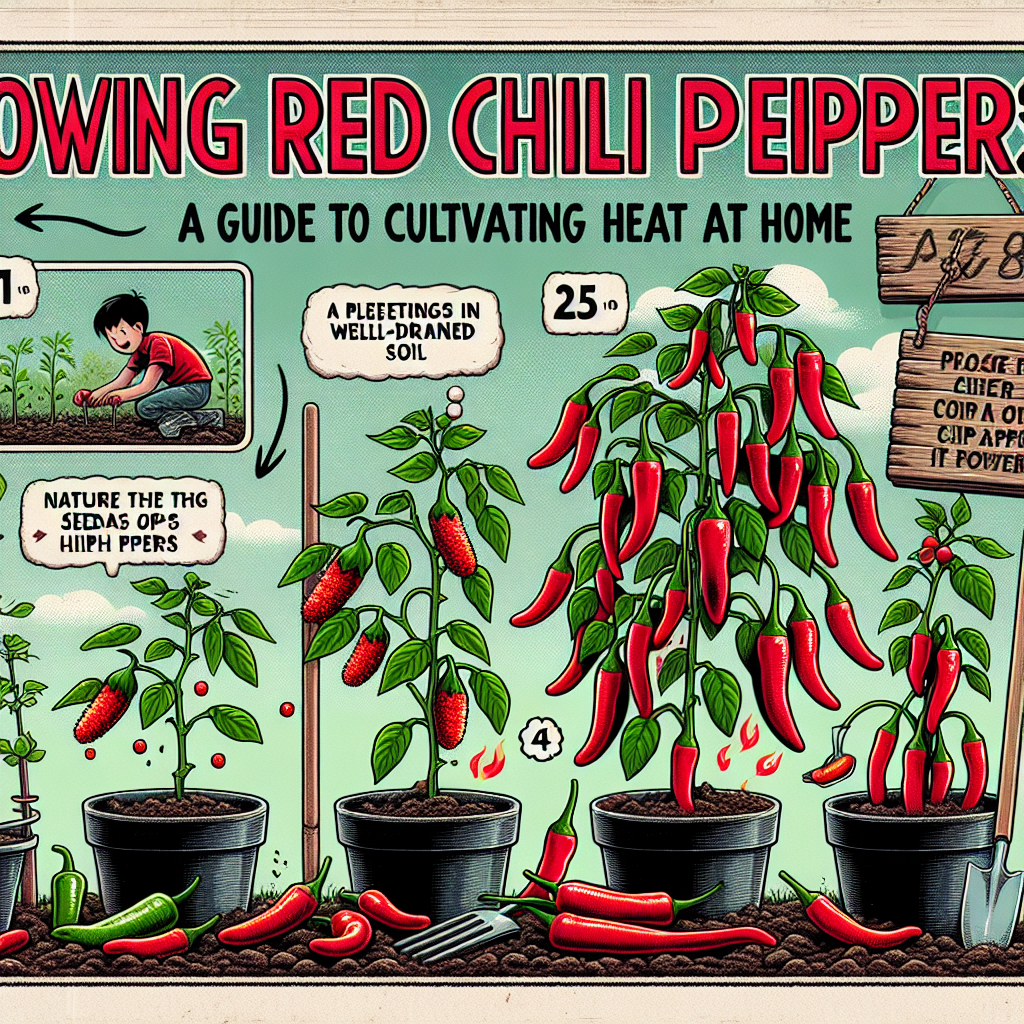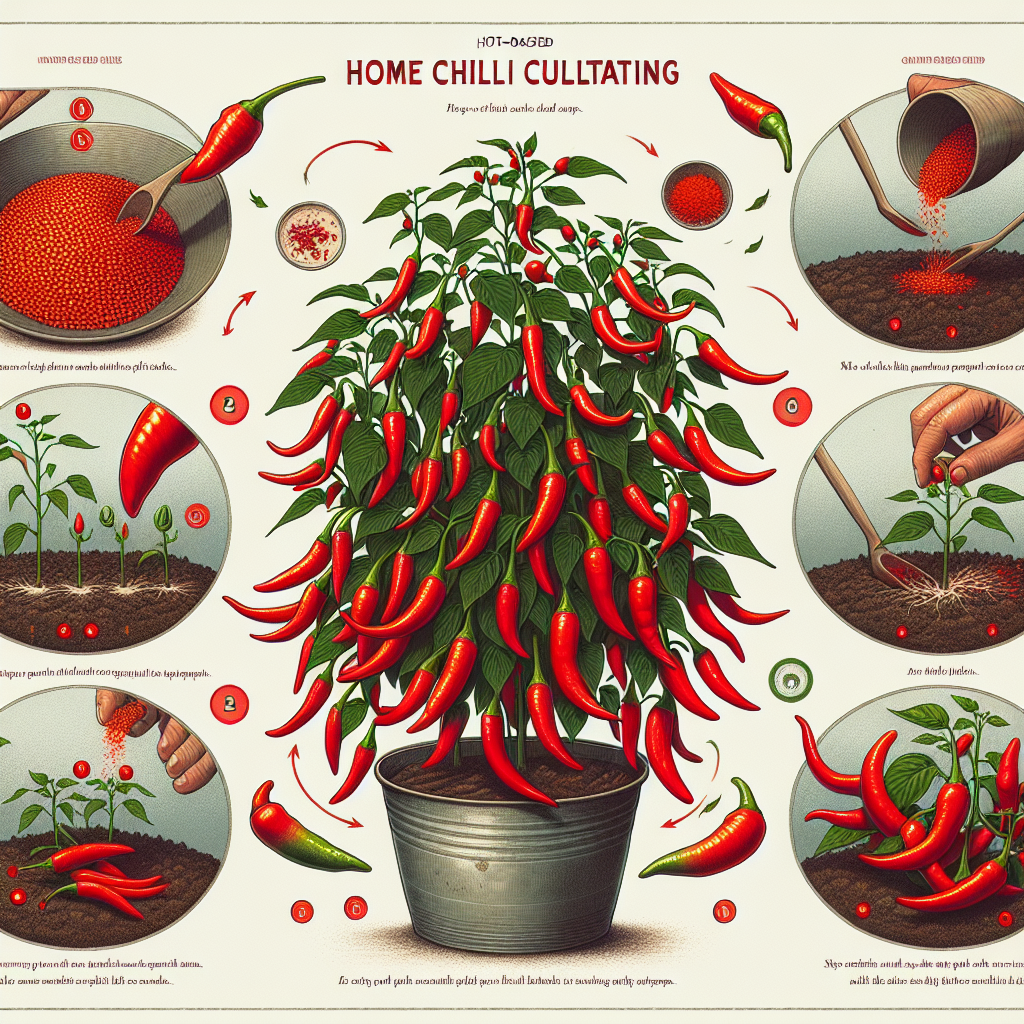Growing Red Chili Peppers: A Guide to Cultivating Spicy Heat at Home
Introduction:
Many people are passionate about adding a touch of spice to their meals. One way to achieve this is by growing red chili peppers at home. Whether you’re a seasoned gardener or a beginner, cultivating your own chili peppers can be a rewarding and enjoyable experience. In this article, we will provide a comprehensive guide to help you successfully grow red chili peppers and add some fiery heat to your culinary creations.
Choosing the Right Varieties:
Before embarking on your chili pepper growing journey, it’s crucial to select the right varieties that suit your taste buds and growing conditions. There is an astounding variety of red chili peppers available, each with its unique flavor profile and level of spiciness. Some popular varieties include Cayenne, Habanero, Jalapeno, Thai Chili, and Bird’s Eye Chili.
Consider your preference for heat intensity when selecting chili pepper varieties. For beginners or those with lower tolerance for spiciness, milder options such as Anaheim or Poblano could be ideal choices. On the other hand, if you crave intense heat, go for hotter varieties like Carolina Reaper or Trinidad Scorpion.
Preparing Soil and Container:
Red chili peppers thrive in well-draining soil with good fertility. To ensure healthy growth and maximum fruit production, prepare the soil by incorporating organic matter like compost or well-rotted manure into it. This will enhance the soil’s ability to retain moisture while improving nutrient content.
If you have limited space or prefer container gardening, choose pots that are at least 12 inches deep and wide enough to accommodate the root system of the chili pepper plant. Ensure that the containers have drainage holes at the bottom to prevent waterlogging.
Sowing Seeds or Transplanting Seedlings:
Chili peppers can either be started from seeds indoors or transplanted as seedlings purchased from nurseries or garden centers. If starting from seeds, sow them indoors 6-8 weeks before your region’s last frost date. Use seed-starting trays or small pots filled with a sterile seed-starting mix.
Ensure the seeds are kept warm (around 70-85°F) and moist until they germinate, which usually takes around 1-2 weeks. Once the seedlings have developed a couple of true leaves, transplant them into larger pots or directly into the garden, provided all risks of frost have passed.
Caring for Red Chili Pepper Plants:
To ensure vigorous growth and abundant fruit production, red chili pepper plants require proper care and attention. Here are some important points to keep in mind:

1. Watering: Chili pepper plants prefer consistent moisture levels but should not be overwatered. Water the plants deeply when the top inch of soil feels dry and avoid waterlogging, as excessive moisture can lead to root rot.
2. Fertilization: Apply a balanced fertilizer every two to three weeks during the growing season to provide adequate nutrients for plant growth and fruit production.
3. Pruning: Regularly pinch back or prune the tips of the plants to promote branching and bushier growth. This encourages more flowers and ultimately increases fruit yield.
4. Supporting: Some chili pepper varieties may require staking or support as they grow taller, especially if they produce heavy fruits that cause branches to bend or break.
5. Pest and Disease Control: Monitor your plants regularly for signs of pests such as aphids or diseases like powdery mildew. If detected early, these issues can be addressed through organic pest control methods or appropriate fungicides.
Harvesting Red Chili Peppers:
The excitement of growing chili peppers culminates in the joy of harvest. The time it takes for peppers to ripen depends on their variety, typically ranging from 60 to 90 days after transplantation. Here are some indicators that your chili peppers are ready for picking:
– The peppers have reached their full size and have vibrant red color (although some varieties may be yellow, orange, or purple when fully ripe).
– The peppers come off easily with a gentle tug.
– Taste a small portion of the pepper to ensure it has reached the desired level of spiciness.
Use scissors or pruning shears to harvest the peppers carefully, preventing any damage to the plant. Once harvested, you can enjoy them fresh, or dry and grind them into chili powder for later use.
Conclusion:
Growing red chili peppers at home is an enjoyable and rewarding endeavor that allows you to add a fiery touch to your culinary creations. By selecting the right varieties, preparing the soil, and providing proper care, anyone can successfully cultivate these spicy plants. So why not embark on this exciting journey and experience the pleasure of homegrown, fiery heat in your meals? Happy gardening!














